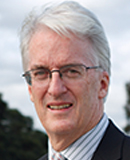
Goodstart: a story of impact investing
While the much publicised buy-up of bankrupt ABC Learning in 2009 relied on a new finance mechanism, the bedrock of the Goodstart deal was the collaboration between disparate but powerful players.

- The bedrock of the Goodstart buy-up was a network of relationships and trust that had taken decades to build that were then harnessed by a clear and compelling goal.
- The Goodstart deal demonstrates the impact of drawing on individuals and organisations from Parliament House, through Australia’s philanthropic world to the financial, legal and business services at the top end of town.
Since its inception in 1988, ABC Learning had grown to become Australia’s largest provider of childcare with close to 1000 centres across the country. However, by 2008 in the midst of the global financial crisis, the business went into administration and receivers were selling off the centres in two tranches – 720 considered financially viable and 260 unviable. With 15% of the childcare market going cheap, ABC Learning’s collapse became an opportunity to transform early learning in Australia.

Two people inspired by this opportunity were Social Ventures Australia’s CEO Michael Traill and CEO of Mission Australia, Toby Hall.
Both of them understood the importance of early learning on a child’s development and the impact this could have on that child’s future educational achievement, workforce participation and social connectedness. Through this one organisation, they saw the potential to increase quality and accessibility in the childcare market and so have a substantial impact on the social fabric. However, the challenge of making this happen was significant.
They needed organisations committed to the goal, willing to work together, who could define and agree on the social impact and create a legal and commercial structure that could achieve it. Most challenging, they needed to raise the funds and win the bid for the bankrupt business – all under a tight time pressure.
That this was achieved is now history. In December 2009 just over one year later, the Goodstart consortium of Social Ventures Australia (SVA), the Benevolent Society, the Brotherhood of St Laurence and Mission Australia was announced as the preferred bidder for its offer of $95 million for 678 centres.
The innovation in the deal process was bringing together individuals and organisations from a broad spectrum of Australian business, government and philanthropic sectors. This unusual collaboration resulted in what was then Australia’s largest social enterprise and is now called Goodstart Early Learning.

This achievement relied on two things: a clear and compelling goal and the extensive networks and trusting relationships built over decades by the key protagonists which reached from the Prime Minister’s office through Australia’s non-profit and philanthropic world to the financial, legal, and business services at the top end of town.
Broad and powerful networks
The importance of these networks was evidenced by the speed with which the syndicate was formed, the level of pro bono and low cost advisory support for the deal, and the ability of the leadership team to raise the necessary capital from a range of commercial and social investors in the limited timeframe.
There was a lot of trust and respect and …a real sense of pitching in and doing what was needed.

Straight off the bat when they saw the opportunity, Traill, who before being founding CEO of SVA worked in private equity at Macquarie Bank, and Hall, whose previous role was COO of World Vision Australia, moved quickly approaching non-profit CEO, Richard Spencer of the Benevolent Society. It was these three organisations, SVA, Mission Australian and Benevolent Society, that in November 2008 formed the initial syndicate interested in buying the 720 viable centres. (Mission Australia had already been exploring taking over some of the unviable ones.)
“The original group was a product of our existing relationships,” says Traill. “We had already been involved in other issues in the sector and in setting up the Community Council of Australia, so we had fairly thick personal and professional relationships.”
The original idea to explore acquiring ABC Learning had come from Evan Thornley, then a Victorian MP and director of the Brotherhood of St Laurence, which led to conversations with its CEO, Tony Nicholson who brought the Brotherhood of St Laurence into the consortium in September 2009.


“Most important,” says Traill, “was the strong relationships between the four leaders and an ego-free approach which allowed strong alignment. There was a lot of trust and respect and dare I say humility. We got on well, and we each brought different networks, organisations and professional skills. There was a real sense of pitching in and doing what was needed.”
The other key player in the syndicate was Robin Crawford. An active philanthropist and founding director of Macquarie Bank, Crawford agreed to support the syndicate in July 2009.
“Robin’s willingness to become chair of Goodstart, to contribute significantly financially and to tap his networks was vital. There’s no way we would have raised the money without him.”
The light on the hill: the simple core mission
Equally important for the deal was the clear and compelling vision – to have a significant impact on early childhood learning in Australia not only through Goodstart’s own centres, but as the market’s largest player bringing influence to bear on the quality and equity of education in the sector.
The original idea was clear to all of us.
That Goodstart had this potential and was commercially viable inspired everybody who became part of the deal: National Australia Bank (NAB) and the Government (both helped finance the deal), the social investors, the advisors and the syndicate members.
“The original idea was clear to all of us. We had a once in a generation opportunity to buy a significantly scaled childcare chain and run it with business discipline for social purpose,” says Traill. “The light on the hill was always very clear.”
“There were a few pressure points during the process when the syndicate members had their differences. However, when we came back to what we hoped to achieve, we realised there was absolute alignment.”
Straightaway, the newly formed ‘consortium’ began to investigate legal and commercial options, and consider the social objectives of the organisation. It quickly saw the opportunity that if the syndicate could drive occupancy levels up and manage labour more efficiently, it could improve the cash flow and run the business at surplus.
The syndicate decided to form a non-profit company limited by guarantee to benefit from payroll tax exemption – labour was a major cost. Non-profit status would also allow it to invest surplus into the organisation to improve quality and social inclusion.
The governance structure allowed the four syndicate member organisations to each have a 25% stake in the new company and appoint representatives to a members’ committee which appoints the company’s board. An early learning sub-committee was also set up to provide advice to the board and to the CEO and senior management team.
Social purpose
Like all social investment deals, Goodstart required the articulation of both realistic and achievable social impact and the development of a viable and sustainable financial model so that both social and financial returns could be achieved.
The social and commercial issues needed to be considered in tandem…
“The social and commercial issues needed to be considered in tandem and are evident in the ultimate design of the investment proposition and its execution,” says Traill.
From the syndicate’s outset, it began working to gain consensus on the social objectives. In December 2008, the syndicate members set up an informal advisory group of early learning specialists including advisors from the three larger non-profits. The aim was to develop and articulate the early learning vision and the for-purpose model. The process involved numerous consensus building meetings to nut out the differences.
The Goodstart foundation document: Connecting Head and Heart which defined the social impact objectives was finalised in September 2009. It provided a framework for how Goodstart childcare centres would drive improved early childhood educational and social inclusion outcomes in Australia.
The two objectives expressed Goodstart’s mission: to provide high-quality, accessible, affordable, community-connected early learning in its centres; and to partner and openly collaborate with the sector to drive change for the benefit of all children.
Commercial deal
Once again, the networks (and experience) of the syndicate members were crucial in quickly rallying and engaging support to muster the deal.
Traffic cop
As a skilled veteran of private equity deals, Traill managed the commercial deal process. The SVA board freed him up so that, at various stages through the process, he could spend anywhere from 50 to 90% of his time on the deal.
That whole communication up and down the line was pivotal.
His key activities included being the ‘traffic cop’ – providing a clearinghouse for all the information and communications between parties; attracting and engaging advisors, negotiating fees, and engaging with the key syndicate players.
The communication function was massive and, according to Traill, was one of his most crucial. At the tail end of the deal, it involved weekly summary emails, twice-weekly phone calls as well as deal team meetings.
“The need to communicate was fundamental. I spent a huge amount of time on this, and when I dropped the ball it had damaging consequences. Communicating each week with four stakeholders each with their own, in some cases, complicated and quite different decision-making processes, and making sure everyone who felt they needed to be was included, was more time consuming than I could have anticipated. That whole communication up and down the line was pivotal.”
The advisors
The experience and networks of Traill from his previous life in mergers and acquisitions at Macquarie Bank, Crawford, a specialist in corporate advisory and capital raising, and Hall who had a background in banking, health and local government, as well as the other syndicate members, were crucial in providing access to investors and advisors.
Most of the key individuals in the advisory firms were well-known to at least one syndicate member…
Most of the key individuals in the advisory firms were well-known to at least one syndicate member prior to each firm’s engagement. This contributed to there being no or reduced upfront fees.
Each of the syndicate members (except for SVA which had a much smaller balance sheet) had agreed to contribute $250k to the deal process. So, advisory fees particularly upfront fees needed to be significantly lower than usual. (Upfront fees for a transaction of this size would typically be around the $2m mark whereas the syndicate could not pay more than $750k.)
The syndicate applied two levers which advisors responded to: discount the overall fee and/or reduce the amount payable upfront and weight it more heavily towards the ‘success’ fee if the transaction was completed.
In the end, the total transaction fee was in the standard range at approximately $5m, however the fixed upfront component was much lower than usual.
Due diligence
Traill describes the deal process as standard as compared with a commercial deal, though the due diligence process had its challenges.
“Normally doing due diligence, you fly solo. There may be one other partner, but four partners was tricky as was doing the due diligence for a business with social objectives.
“The numbers from a business and financial point of view had to stack up; we wanted to be clear that the social purpose objectives were realistic and achievable. However, the place was so badly beaten up and morale was low. It was clear that it would be challenging to transform the centres which hadn’t been adequately invested in.
“So a core part was gauging how deteriorated the business was and understanding what we were actually buying in terms of the people and resources.”
During the due diligence process, the team uncovered more issues with the profitability of centres, and as a result the estimated value of the business dropped.
The commercial proposal relied on the reduction of labour costs through the payroll tax exemption as well as more efficient staffing and occupancy increases as a result of the reputation of the non-profits involved, the improved brand and increased quality. “We believed that the existing reputations of the syndicate members as social organisations might appeal to parents and drive enrolments up,” says Traill.
Capital structure
As a non-profit company limited by guarantee, Goodstart needed 100% debt financing i.e. it could not raise equity capital for the deal. This meant finding investors who would be willing to take on a high risk for the rate of return that Goodstart could offer.
Raising this capital was the most challenging aspect of the deal. That Goodstart succeeded was agan the result of the syndicate members’ networks. Most of the individuals who invested in Goodstart were already well known to at least one syndicate member.
…provided a means for the members to contribute to the capital and earn an income from that loan…
The final funds raised included $95m to purchase the 678 centres plus $70m for operations. The capital structure of the acquisition resembled that of a private equity transaction but the mix and sources of capital were pioneering for the non-profit sector in Australia.
The final layered capital structure provided for different risk and return appetites. It consisted of a layer of commercial senior bank debt, a layer from government and a layer of social capital.
Each of the member organisations with significant balance sheets (i.e. all except SVA) agreed to contribute $2.5m cash for members’ subordinated notes. This debt instrument provided a means for the members to contribute to the capital and earn an income from that loan.
The deal also used a more unusual form of debt: a $2.5m non-cash members deeply subordinated note, which allowed the members to earn an income for the advisory support they had provided for the deal. This was a way of valuing the enormous amount of resources that each of the four organisatons had invested in the deal.
Both of these debt instruments earn a 15% return although they carry a high risk as they would be last to receive a return or capital repayment out of all of the debts.
The bank
It was Crawford’s relationship with NAB Deputy CEO, Michael Ullmer which gave the syndicate the first approach to the bank.
“I doubt NAB would have lent the money if Michael Ullmer wasn’t involved,” says Traill, “and I doubt that Ullmer would have been involved if he hadn’t had a close relationship with Robin and a high regard for his commercial and business skills.”
Ulmer had a strong belief in education as a way for people to realise their potential, and Goodstart’s purpose aligned with NAB’s social agenda, however, clearly, it needed to be a legitimate commercial loan.
The bank’s corporate finance team ran a standard loan approval process and NAB agreed to provide senior debt to the syndicate through four senior debt facilities overall worth $120m. These facilities were approved by November 2009.
The Government
As key influencers in the area, Nicholson and Hall had outstandingly close relationships with the then Federal Education Minister, The Hon Julia Gillard MP and the then Prime Minister, The Hon Kevin Rudd MP and their offices. “These were critical in asking for Federal Government funding,” says Traill.
Minister Gillard had established a childcare industry taskforce prior to ABC Learning going into receivership. The syndicate believed that the Government’s objectives aligned with those of the syndicate, and so, in July 2009, Traill and Nicholson approached the Federal Government to ask for a loan.
Following due diligence, the Department of Education, Employment and Workplace Relations agreed to a $15m medium-term loan in November 2009 allowing most of the principal to be repaid in later years.
Social investors
In August 2009, when Goodstart submitted its non-binding indicative offer of $150-170m (a high offer to ensure it proceeded to the next stage), the syndicate was still uncertain how it would raise enough capital.
Keen to have the outstanding capital funded by social investors (investors who desired a commercial return while their investment funded a social purpose), the syndicate created a new debt instrument – a social capital note. The syndicate decided on a 12% rate of return – at the time a lower rate than could be earned elsewhere for the given level of risk.
…most of these investors were known by either or both Traill and Crawford.
In September, Traill and Crawford (who by then had agreed he would chair the Goodstart board) began approaching individual investors (philanthropists, high-net worth individuals) and foundations, inviting them to invest in the social capital notes. Again, most of these investors were known by either or both Traill and Crawford.
By the time Goodstart was announced as the successful bid on 9 December 2009, they were on track to raise $22.5m from these social investors.
In total, 41 individuals or foundations, out of over 100 who were approached, invested in Goodstart – because they supported the aim of improving quality and inclusion in childhood education. Almost all of them trusted Traill’s and/or Crawford’s business judgement. No doubt, they were also reassured that Traill and Crawford had themselves invested in the business and that Crawford had agreed to chair the emerging social enterprise.
The Goodstart deal demonstrates the potential to build on networks across Australian business, government and philanthropic sectors and inspire with a compelling goal to invest for social impact.





